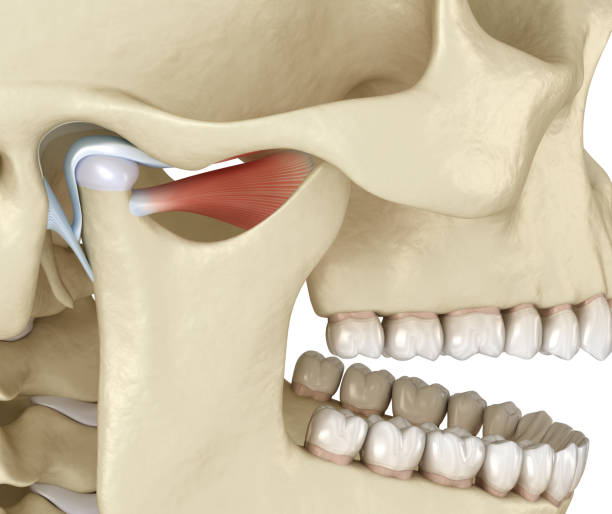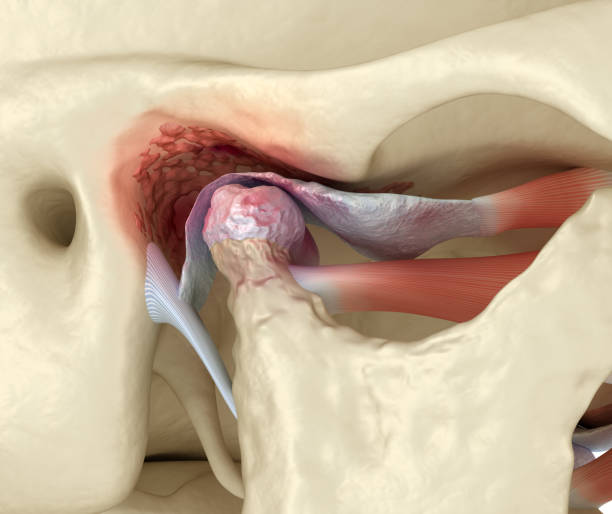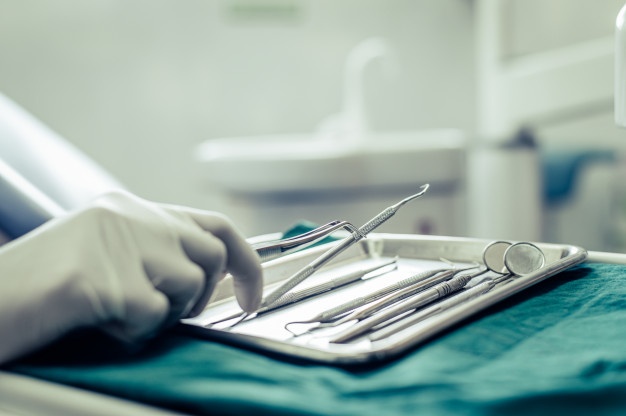Temporomandibular Joint (TMJ) Disorders is a lifestyle modulating disorder. Patients having this disorder go through a lot of pain, discomfort and restriction in the joint movement in day to day life. There are times when the patient is aware of the pain and discomfort but the diagnosis is not made on time, sometimes if the diagnosis is made the appropriate treatment is not started on time. These patients are passed on from doctors to doctors in search of an appropriate treatment.
As TMJ disorders is a complex disorder requires right intervention in the right stage of the disorder Temporomandibular Joint Disorders (TMD) is a very broad term in medical practice, it is a multifactorial disorder that may include joint, muscles and surrounding bone structures. Okeson(1996) described it as number of clinical problems that involve the muscles of mastication and the temporomandibular joint (TMJ), and its associated structures.
Most patients with TMD come with a chief complaint of PAIN, Sometimes the patient does not feel Pain, but that does not mean that there is no damage in the Joint as clicking and Popping still persists. TMD when left untreated takes the shape of ORO FACIAL PAIN DISORDER.
Signs of TMJ Disorders
- Clicking and Popping sounds on either opening or closing the mouth or both.
- Deviation or deflection of the lower Jaw while opening or closing the mouth.
- Pain radiating to the ear and head.
- Difficulty in opening the mouth.
- Difficulty in yawning and chewing food.
- Dull gnawing unexplained Pain in the face.
- Tired feeling in the face muscles.
- Clogged Ear feeling / Stuffy Ear feeling.
Majority problems happening in the TM Joint are on account of the Articular Disc positioned between the bones of the Joint. The position of the Disc and the physical condition of the Articular Disc are the deciding factors for planning appropriate treatment plan. However most of the treatments in the initial stages of TMD are treated using nonsurgical conservative methods, it is important to understand which stage of TMD is the patient in at the moment.
Dr Tarun Sharma has dedicated his years of practice in surgically treating TM Joint problems using TMJ Arthroscopy (Diagnostic as well as Therapeutic), Open Joint Surgery and Total Joint replacement. He has performed over more than 100 TMJ surgeries with a very high success rate with a patient centric treatment plan. He is Formally Trained by completing his TMJ Mini Residency from The University of Maryland, USA, for 1 year and also has attended various other TMJ Residency Programmes. He also holds special interest and experience in the subject of Juvenile Idiopathic Arthritis (JIA).
What is Juvenile Idiopathic Arthritis?
TMJ arthritis in children with chronic arthritis was first reported by Dr Still . Although TMJ arthritis in JIA is frequently asymptomatic, the TMJ is particularly susceptible to damage from arthritis due to its unique anatomy and biochemical composition. Mandibular growth occurs within this center from the prenatal period until just after puberty, and damage to the growth center due to inflammation or trauma during this time period frequently results in alterations in mandibular growth. In patients with JIA, unilateral TMJ involvement can lead to facial asymmetry, and bilateral involvement can lead to retrognathia, the so-called bird- face appearance. Any change in mandibular growth can lead to orofacial signs and symptoms, changes in bite, and therefore, functional and esthetic problems.
Surgical options
TMJ Arthroscopy It is the most recent advancement in the field of minimally invasive TMJ surgery. This procedure does not involve any incisions on the face and it can be performed under LA or GA, and is a safe and a precise procedure with minimal downtime for the patient. It does not involve any Scars on the Face. Arthroscopy is considered as a superior procedure to arthrocentesis and can be performed in two ways diagnostic arthroscopy or therapeutic arthroscopy; many TMJ surgeons have now started performing diagnostic arthroscopy substituting it for an MRI of the joint as the surgeon has a real time information about the joint and simultaneously can also perform a procedure if he/she wants.
Therapeutic arthroscopy involves standard procedures that involve inspection, lavage, excision of fibrous bands and various disc repositioning procedures within the joint, a surgeon can also take biopsy of a suspicious structure inside the joint. Majority of the TMJ issues arise because of an anterior disc displacement in the TMJ, these disc repositioning procedure can be performed conveniently using arthroscopy. TMJ Arthroscopy is Divided in levels, i.e. Level 1 Arthroscopy, Level 2 Arthroscopy and Level 3 Arthroscopy. DrTarun Sharma is among the first few Maxillofacial Surgeons.
- TMJ Arthrocentesis This is a procedure that bridges the gap between surgical and conservative TMJ treatment options. When all conservative methods of treating TMD are performed and remain unsuccessful for more than 6 months it is required to consider more invasive options depending on the clinical and radiological evidence. Arthrocentesis is a procedure that involves blind lavage of the joint with two18 gauze needle in the upper compartment of the joint using Ringer lactate (RL) solution and flushing of the inflammatory mediators present in the joint and can be performed under local anaesthesia, relieving the joint of the negative pressure thereby freeing the disc of any adherence to the bone. The rationale behind this procedure involves the flushing of these inflammatory mediators that are present in the joint because of disc interferences, mechanical obstruction, occlusal loading of the TMJ, that restrict the movement of the joint and cause pain, once these mediators are flushed from the joint it improves the range of motion and reduces pain significantly.
- TMJ Open Joint Surgery It may be indicated for the following: A. Tumors B. Disc perforations C. Fibro Ankylosis D. Bony ankylosis E. Genetic/syndromic conditions F. Condylar hypoplasia/hyperplasia G. Hypermobility from neurological conditions H. Total joint replacement surgery. TMJ surgery is technically one of the more difficult surgical dissections in the maxillofacial region. However Open Joint surgery gives the surgeon more room for making some permanent changes in the Joint and is indicated in various Disc Related pathologies and Displacement cases as well for a long standing TMD.
- TM Joint Replacement is considered for the end stage TMJ disease such as severe trauma, tumour where no components of the TMJ can be salvaged and both the disc as well as the condyle has to be removed. This leaves the patient with a facial asymmetry and malocclusion which then has to be treated with a Stock Alloplastic or Patient Specific Custom Made Joints. Dr Tofiq Bohra is among the few Surgeons All Over India who has performed many TM Joint Replacements with high success rate.




